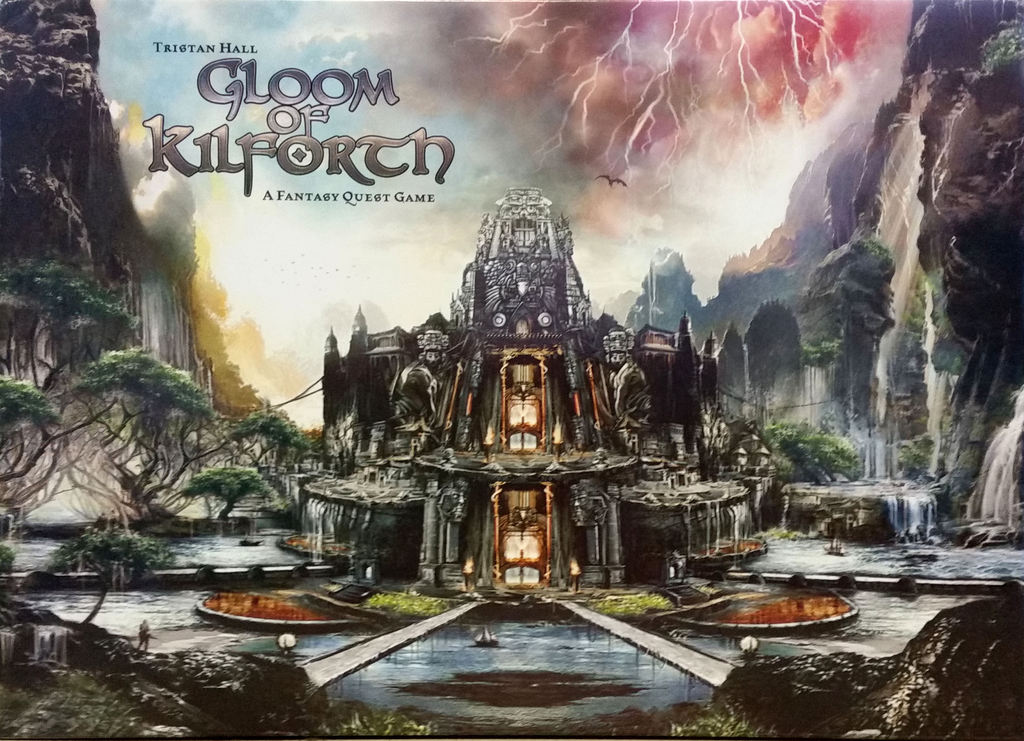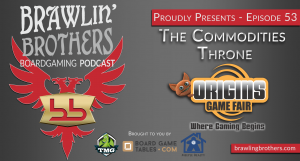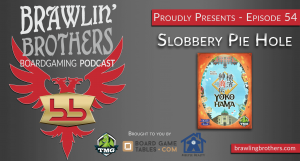Gloom of Kilforth Review
I have a disposition in favor of dice chucking, card flipping games that tell stories. I would call myself a fan of Fantasy Flight Games and Richard Launius. If you were to put a copy of Gloom of Kilforth Review (Gloom) on the table for a demo, you would be hard pressed not to think that this was yet another collaboration between FFG and the beloved Mr. Launius. At its heart, Gloom feels like a card game implementation of Defenders of the Realm/Last Stand. The core decision space is made up of deciding where you are going to go and what actions (form a large list) you are going to take. Dice chucking and card flipping determine outcomes and randomize the game state so that you have a constantly evolving game map with competing priorities.
That all makes Gloom sound very familiar, so is there anything new here?
The most obvious thing that sets Gloom apart from other games of this ilk is the impossibly gorgeous art work that spills out over each unique card in the game. Anna Kryczkowska’s work gives off a very similar vibe to Fernanda Suarez (Dead of Winter, Ashes). Imagine if Fernanda used less oil & pastels and went for a more photo realistic look, that would give you an idea of Anna’s work. Probably my favorite quality of Anna’s work is her depiction of characters. There is a stunning and impossible beauty to each of the characters depicted, both men and women. This is especially impressive considering that these are gorgeous depictions without ever reducing the subject to a sexual object. One of the things that drives me nuts about deviant art is that so many artists confuse the beauty of the human form with sexualization of the human form. You don’t need to be demean the subject of an image to convey a sense of beauty or sexiness.
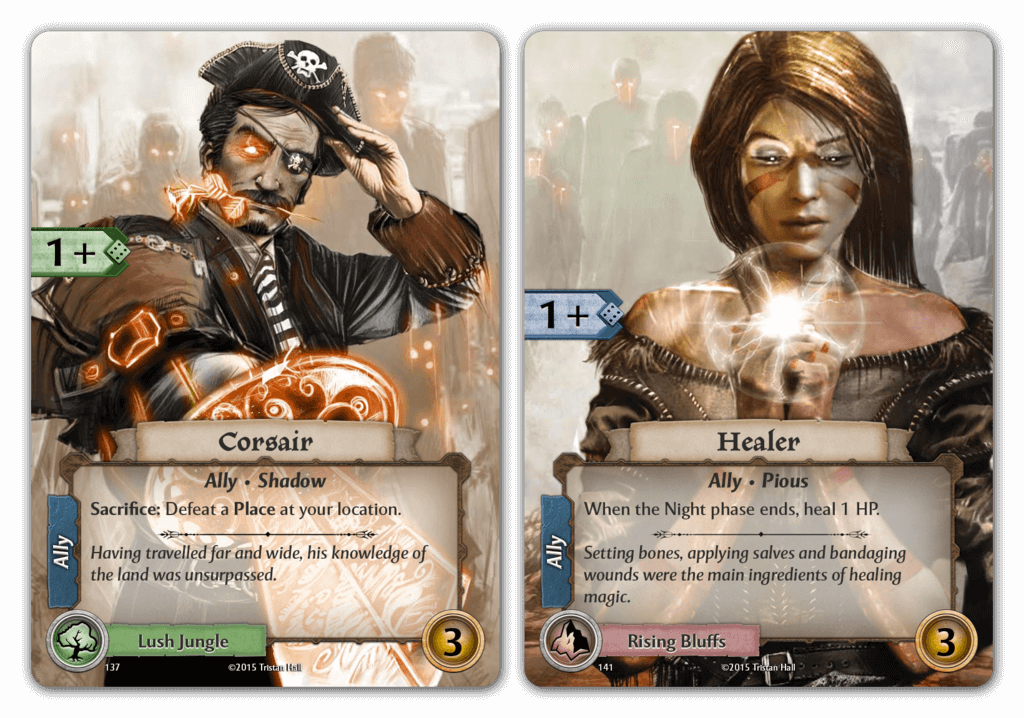 There are too many gorgeous illustrations in Gloom to pick a favorite, but I would point out one especially cool image for doing something that is outside the norm, depict a stunningly beautiful dwarf female. Anna re-imagines what a Female Dwarf would look like and tosses aside the stock image most of us have seen (I’m looking at you Dragon Age). The Female Dwarf illustration not only proves Anna’s technical skill, but also her ability to create unique images that you won’t find anywhere else. The exact opposite example I suppose is the Female Orc, who has a wholly original and terrifying appearance.
There are too many gorgeous illustrations in Gloom to pick a favorite, but I would point out one especially cool image for doing something that is outside the norm, depict a stunningly beautiful dwarf female. Anna re-imagines what a Female Dwarf would look like and tosses aside the stock image most of us have seen (I’m looking at you Dragon Age). The Female Dwarf illustration not only proves Anna’s technical skill, but also her ability to create unique images that you won’t find anywhere else. The exact opposite example I suppose is the Female Orc, who has a wholly original and terrifying appearance.
I want to briefly acknowledge Tom Howard’s work on cleaning up the card layout so as to get the best mileage out of Anna’s amazing art. I really wish more games used Tom’s approach to layout design. Layout design in the game is consistent and quite user friendly.
I do have two criticisms though when it comes to the art. First, without naming names, there are one or two cards that dip into the uncanny valley. You’ll know them when you see them, but I simply want to mention that while the art is top tier, it isn’t perfect.
Second, card backs are a huge pet peeve of mine. I hate it when card backs break the aesthetic of the game when it is spread out on the table. Check out the card backs for games like Grimslingers or the upcoming Hands of Fate board game. Those are games with lavish card back art that doesn’t break the game setting on the board and serve to compliment the visual appeal. Think of card backs as the frame you put on a painting. You don’t want a card back to detract from the game or seem out of place. I will fully concede that the art on the card backs is gorgeous (it is taken from the art used on various cards), HOWEVER, the card backs use the type of art you want on the FACE of you cards, illustrating the plot of the game. Card backs are a user interface element and should look like the buttons you would find in the menu of a video game. Granted, you don’t want to go for too simple, but Grimslingers and Hands of Fate have proven that you can make your card backs look amazing without using the same type of art from the face of the card. Another good example is what FFG does with their card backs. Look at Eldritch Horror or Arkham Horror LCG as excellent examples.
So the game is pretty, does the game play warrant the high production values?
Like 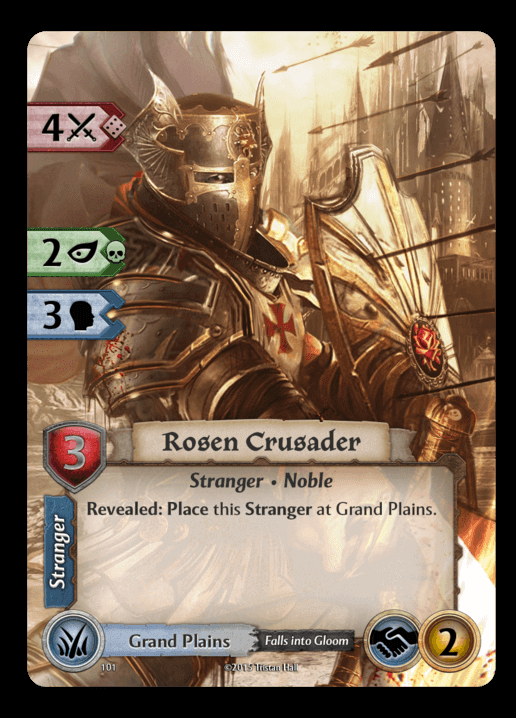 I mentioned earlier, Gloom gives me a real “open world heroes on a quest” vibe kind of like what you get in the Defenders games from Richard Launius or even Eldritch Horror. You can’t just do anything, or go anywhere and expect to win, but even from turn 1 you have maybe 4 or 5 different things you could start going after to further your quest. From that point forward, you’ve got to navigate the always evolving landscape and network of quests, people, places, and monsters. There is a very real sense of freedom and exploration that permeates the journey.
I mentioned earlier, Gloom gives me a real “open world heroes on a quest” vibe kind of like what you get in the Defenders games from Richard Launius or even Eldritch Horror. You can’t just do anything, or go anywhere and expect to win, but even from turn 1 you have maybe 4 or 5 different things you could start going after to further your quest. From that point forward, you’ve got to navigate the always evolving landscape and network of quests, people, places, and monsters. There is a very real sense of freedom and exploration that permeates the journey.
A big part of the hero’s journey you go on is the development of your character as they complete their saga (think of it like leveling up every time you complete a chapter). There is a very real sense of player empowerment. As your character grows, they can eventually double the number of things they can do on a turn and have much greater chances of succeeding at various tasks. This results in a very interesting progression in the game’s pacing. Early on, you’ll be struggling against the game to complete most tasks, and by the game’s end you’ll be very powerful, but short on time. It is ultimately, a very satisfying sense of progression.
Players have been conditioned by decades of adventure games on how a player’s inventory works. You kill bad guys, and steal their gear for your own use. In Gloom, inventory conventions are completely turned on their heads. When you defeat a challenge (discover a location, persuade a stranger to help you, complete a quest, or defeat a monster in combat) you can take the gold you loot, but you also get your choice of a rumor card. This rumor card is either the challenge card you overcame (which is used for completing your saga chapters) or you can trade it in for an item, ally, spell, or title card. These four categories of “power up” cards work differently then what you are probably used to. You can’t just “equip” these new cards, you’ve only gotten a rumor that this special item is out there to be found. The narrative here is that you are learning information to either further you quest OR to find cool stuff out in the world. Once you travel to where the item is hidden, you can discover it, and “equip” it. This is an intriguing design decision that feels like nothing I’ve ever played before. There is a narrative element to this design choice, but I believe that the primary reason it exists is that it forces the player to make hard navigation decisions. Do I go east to get this cool spell or do I go west to further my quest or do I go north to kill the Big Bad’s agents?
I’m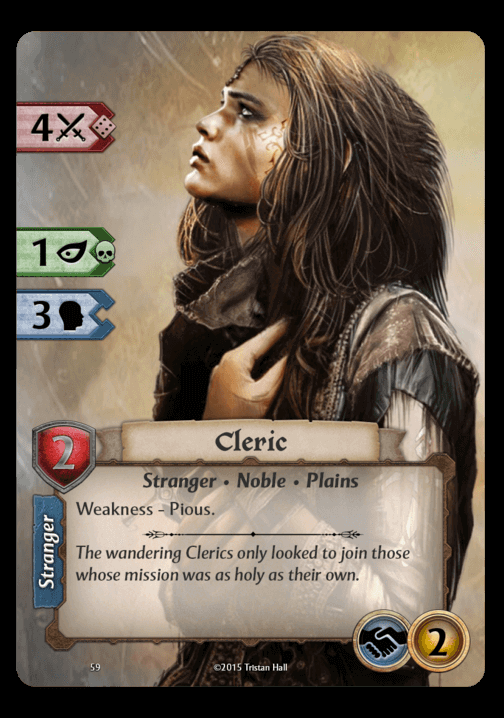 always a proponent of having a strong narrative element in games. Gloom of Kilforth’s saga system falls somewhere between FFG’s Lord of the Rings quest structure and the Act cards found in FFG’s Arkham Horror LCG. You complete requirements to unlock chapters of your character’s saga. This unlocks a blurb of story text that explains what you are doing in the next step of your quest. There are 8 separate Sagas available in the game. Once you’ve played through those 8 you’ll have seen all the narrative content the game has. The true narrative of Gloom of Kilforth Review of course is the story the players tell themselves as they play. Some players will of course really get into this, while others will have great trouble with it. This was an issue in the cult classic game Shadows of Malice. After you’ve squeezed all of the fluff text out of the game it will be the player’s responsibility to drive the narrative potential of the game (which may be good or bad depending on your tastes). Could I see myself ignoring the story all together and simply playing through the mechanisms of the adventure? Is the game strong enough to support that? I’m not sure yet, but there are plenty of games that surprise me and pull that off (Space Hulk Death Angel comes to mind).
always a proponent of having a strong narrative element in games. Gloom of Kilforth’s saga system falls somewhere between FFG’s Lord of the Rings quest structure and the Act cards found in FFG’s Arkham Horror LCG. You complete requirements to unlock chapters of your character’s saga. This unlocks a blurb of story text that explains what you are doing in the next step of your quest. There are 8 separate Sagas available in the game. Once you’ve played through those 8 you’ll have seen all the narrative content the game has. The true narrative of Gloom of Kilforth Review of course is the story the players tell themselves as they play. Some players will of course really get into this, while others will have great trouble with it. This was an issue in the cult classic game Shadows of Malice. After you’ve squeezed all of the fluff text out of the game it will be the player’s responsibility to drive the narrative potential of the game (which may be good or bad depending on your tastes). Could I see myself ignoring the story all together and simply playing through the mechanisms of the adventure? Is the game strong enough to support that? I’m not sure yet, but there are plenty of games that surprise me and pull that off (Space Hulk Death Angel comes to mind).
So yeah, I enjoy Gloom of Kilforth, but there are warts worth noting.
Gloom is a tough game. The overall balance feels just about right, and every game I’ve played felt like I could win it, up until the point I lost. I always walk away feeling that I could have won if I’d made a few different choices or if the dice hadn’t been so tough on me that one round. Gloom isn’t an impossible game by any stretch of the imagination, but I do enjoy games that come off as a tiny bit easier. I would probably have preferred that there were official ways to adjust the difficulty (again, see Arkham Horror LCG) like say an alternate night deck (think mythos deck from Arkham Horror LCG). Expect to lose more then you win. I am a bit put off though by the level of difficulty in a solo game with event cards that require tests to avoid damage. Sometimes, when event cards come up, you will find yourself testing a skill where you must produce 3 successes off of only 3 or 4 dice and you only get one shot with no re-rolls. These types of tests just feel unfairly punishing, especially early in the game. Even if I have a particularly high stat for early to mid game (say 5) that would mean I only have one roll of 5 dice to score 3 successes (fives or sixes). Even in this “ideal” situation, the odds of success are quite low.
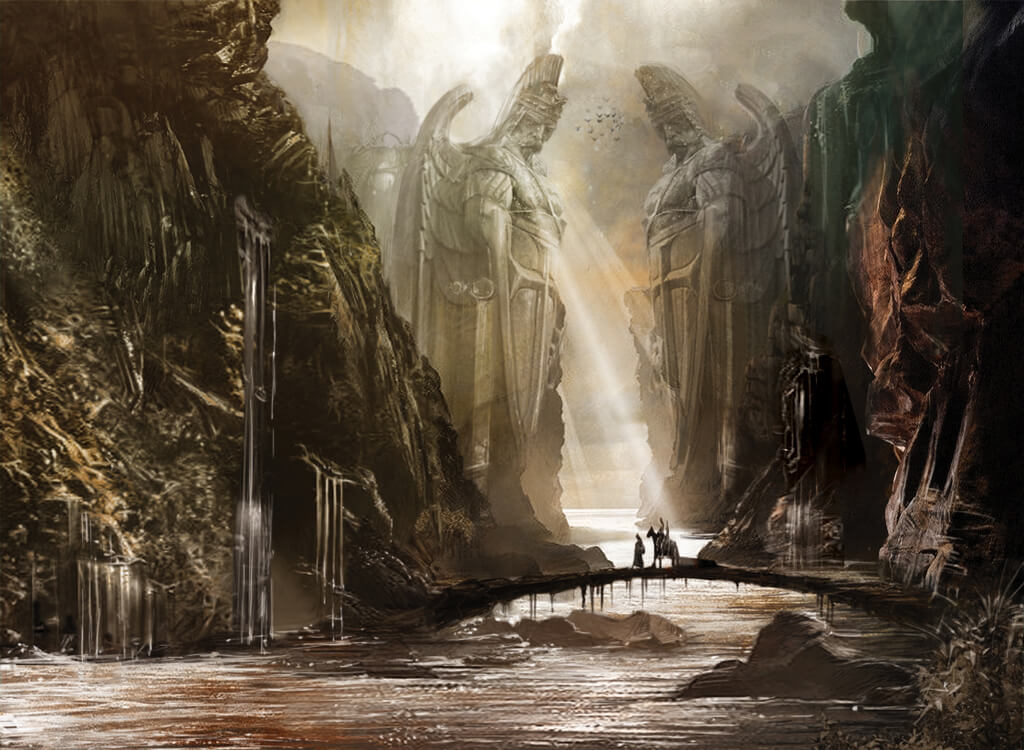
Game difficulty wouldn’t be as big of a deal if we were talking about a quicker game (like Hostage Negotiator) but Gloom is a LONG game. My first solo game ran over 3 hours (but a lot of that was thanks to all the rules checking). More players means a lot more time. I have never been that bit of a fan of high difficulty in games. I like games to challenge me just enough to make me feel smart and clever. I like games that empower me as a player. I’m not a fan of playing a 5 hour game of Eldritch Horror only to have everything fall apart at the very end. My general way of thinking is that the longer the game is, the more I want to win the game. Losing a long game sucks and can feel like a huge waste of time. On the plus side, I do think that the game speeds up a lot as you become familiar with the rules and aren’t forced to constantly flip through the book.
Competitive mode is near impossible with the wrong crowd. Saavy gamers will be able to screw up the perceived leader’s plans a bit too easily and effectively play the game so that EVERYONE loses in the hope that you can dumb luck your way into having the most VP at game’s end (which is the tie breaker when nobody can “win” by saving Kilforth). Competitive mode is narrative breaking and shouldn’t be tried with the wrong crowd because it completely misses the point of the game.
The rules book isn’t particularly well organized, there is no player guide or flow chart to easily use during play, and it is very difficult to look up rules during game play. Gloom has many tiny little rules and exceptions (as you would expect in a dice chucking, card flipping fantasy romp). If you want to learn how to play the game, your first step is to watch Tristan Hall’s EXCELLENT how to play videos and THEN read the rule book.
The treasure bag is WAY too small. I think that the felt bag for the treasure tokens might have been an afterthought added late in the development process. Its nice to have for other games, but there are SOOOO many little treasure chits that you can’t possibly put an adult hand into the bag and shuffle all the little chits. I upgraded to a large sized Crown Royal bag and it works perfectly.
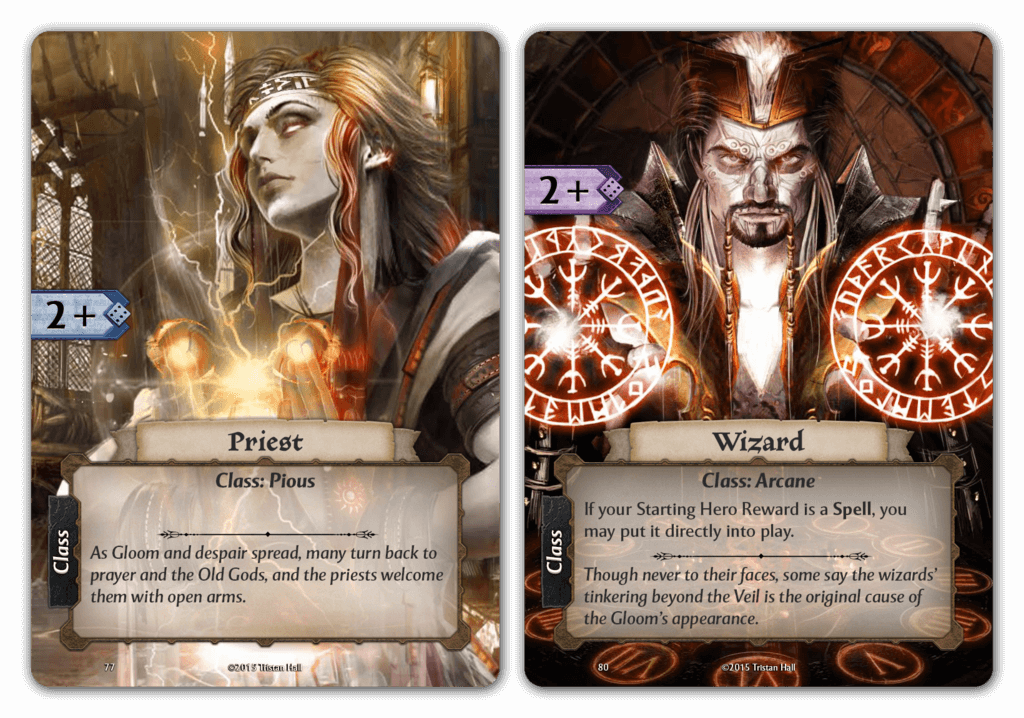 The wooden bits are pretty meh. Honestly, unless your custom wooden bits are particularly interesting, I’d almost rather have a simple wooden cube. The coins are boring. The obstacle tokens look like small clouds. The hearts and AP would have been done better using the wooden action tokens from Mage Wars. These bits would have been far more user friendly as cubes. These components feel like such a misstep in part because the execution of the other components is all top notch.
The wooden bits are pretty meh. Honestly, unless your custom wooden bits are particularly interesting, I’d almost rather have a simple wooden cube. The coins are boring. The obstacle tokens look like small clouds. The hearts and AP would have been done better using the wooden action tokens from Mage Wars. These bits would have been far more user friendly as cubes. These components feel like such a misstep in part because the execution of the other components is all top notch.
It almost goes without saying that Gloom is a game mired in randomness. Card flipping randomness evolves the board state, the options of cards you have available to you, and the options you can pursue to advance the game. Almost all encounters require dice based checks. If that isn’t your kind of jam, consider yourself warned. For me this isn’t really a negative, as I am quite fond of how the game randomly evolves as a puzzle.
My biggest game play complaint about Gloom comes from the skill cards you pick from each time you level up. I’ve probably been spoiled by games like Gloomhaven, where you get to pick from really cool skill cards every time you level up. Completing chapters of your saga in Gloom is the equivalent of leveling up. You gain a single hp (and the ap that comes with it) which is a lot more powerful then it sounds, but you also get to choose one of two skill cards to unlock. Unfortunately, I’ve found that these skill cards are rather underwhelming in practice. In most cases you get to pick from 2 different cards that feel pretty unhelpful. It makes leveling up a lot less exciting then it could have been.
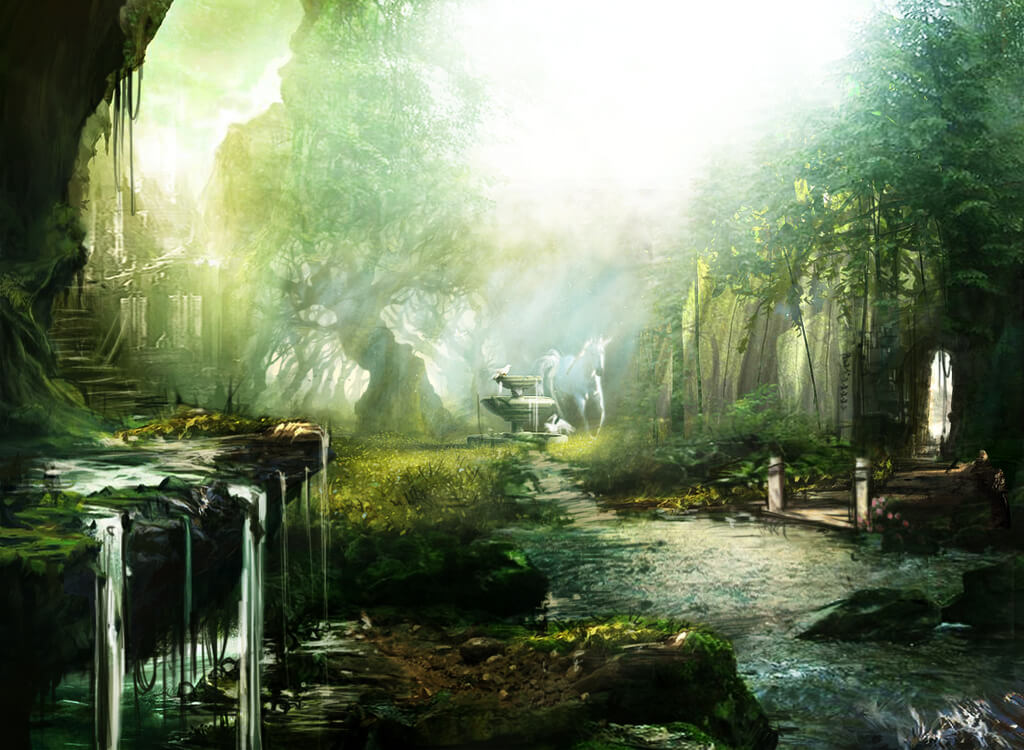
Final Thoughts
Gloom of Kilforth Review is the very definition of a passion project. Years of care and love have been poured into honing the game play and polishing the art. Gloom succeeds in its mission of creating a fantasy RPG experience built on the framework of a Fantasy Flight Games styled card and dice game. Gloom doesn’t quite offer players a complete sand box experience, but it does give them several choices of directions to go in. As players “level up” they do get a very real sense of empowerment, which is always fun and exciting. The narrative, while limited, is strong enough to help get you through the first several games. Even though Gloom does have its occasional issues, nothing I mention in this review were enough for me to second guess my purchase. Perhaps the biggest compliment I can offer about Gloom of Kilforth, is that I am already hoping for more content. I want more characters, classes, skill cards, optional Night Decks & locations, an official casual mode, and most of all, more sagas.
Having read through my criticisms a few times I think I may come off far harsher on Gloom of Kilforth then I really feel. I truly appreciate the sense of open ended exploration and development that the game provide. I also appreciate the mature feel of the setting. Gloom of Kilforth Review feels like a far more desperate and grim world then the popular Gloomhaven.
Fans of adventure games with the classic “success on a roll of 5 or 6” will find that Gloom of Kilforth is a must own addition to their collection. I am tempted to say that Gloom fires the Defenders games from my collection because of its superior aesthetic presentation and more streamlined game play, however, the at time brutal difficulty nags at me. Be warned that this is a game that is going to be tricky to find copies of in the near future. Buy now before the secondary market doubles the price.
Scott Sexton
Scott Sexton is an avid boardgame enthusiast who regularly posts reviews on BoardGameGeek - You can subscribe to his Review Geeklist here and check out his contributions to Brawling Brothers here.

